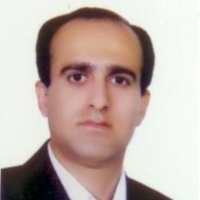Evaluation of the effectiveness of groundwater reclamation and balancing plan based on fuzzy-TOPSIS method (Case study: Urmia plain)
Put critical situations. Decline of groundwater level in Urmia plain and declaration of this plain as one of the forbidden plains of West Azerbaijan province; It has caused the rehabilitation of the aquifer and planning to prevent its decline and increase its level to be among the priorities of the executive plans of the Ministry of Energy in this area.In this study, in order to rehabilitate the aquifer and in parallel, the effect of annual rainfall parameters and reduction of groundwater abstraction on changes in the aquifer level of the Urmia plain was investigated using the fuzzy TOPSIS technique. In this regard, the effectiveness of the measures taken based on 4 management scenarios, a questionnaire with 18 options in the form of three criteria of implemented measures, short-term proposed measures and long-term proposed measures were prepared. Given the breadth and multiple interactions between the criteria and the leading measures, the fuzzy method to express the effect of each option quantitatively and the TOPSIS fuzzy analysis method to analyze the opinions of experts with the aim of ranking the options of each scenario in Problem solving was used. The results indicate that increasing rainfall and consequently decreasing groundwater abstraction is still the most effective factor in the relative improvement of the quantitative status of the aquifer. Meanwhile, by examining the amount of rainfall in the last few years in the Urmia plain, it can be stated that in addition to changing the amount of rainfall as the main factor, the effectiveness options of patrol and inspection groups (Ch6), feeding the aquifer by releasing water from the dam Tea city (Ch7) and river blockage in non-crop seasons and feeding the aquifer through the main river (Ch4) are among the measures of the rehabilitation and balancing plan (implemented) in improving the groundwater level. Given the breadth and multiple interactions between the criteria and the leading measures, the fuzzy method to express the effect of each option quantitatively and the TOPSIS fuzzy analysis method to analyze the opinions of experts with the aim of ranking the options of each scenario in Problem solving was used.The results indicate that increasing rainfall and consequently decreasing groundwater abstraction is still the most effective factor in the relative improvement of the quantitative status of the aquifer. Meanwhile, by examining the amount of rainfall in the last few years in the Urmia plain, it can be stated that in addition to changing the amount of rainfall as the main factor, the effectiveness options of patrol and inspection groups (Ch6), feeding the aquifer by releasing water from the dam Tea city (Ch7) and river blockage in non-crop seasons and feeding the aquifer through the main river (Ch4) are among the measures of the rehabilitation and balancing plan (implemented) in improving the groundwater level.
-
Modeling of the evaporation process using the hybrid algorithm of the COOT bird and artificial neural network
Farnaz Alempour Rajabi, Mohammadali Ghorbani *,
Journal of Water and Soil Management and Modeling, -
Evaluation of the basin hydrological response to the instantaneous storm process using the concepts of MATLAB software simulink control system
Alireza Moradi, *, Ahmad Fakheri Fard
Journal of Water and Soil Management and Modeling, -
Investigating Precipitation Changes and Meteorological Drought Characteristics with Climate Change Scenarios (Case Study: Sari-Qamish Sub-basin of Zarinehrood)
, *, Mohammad Ali Ghorbani, Farshad Ahmadi
Journal of Water Harvesting Research, Winter and Spring 2023 -
Investigating the Performance of Electronic and Mechanical Measuring Devices in Measuring Flow Hydraulic Parameters (Case Study: Mahabad Irrigation and Drainage Network)
*, Yaghob Azhdan, Mohammad Ashrafi Geshlagi
Journal of New Research in Sustainable Water Engineering,



